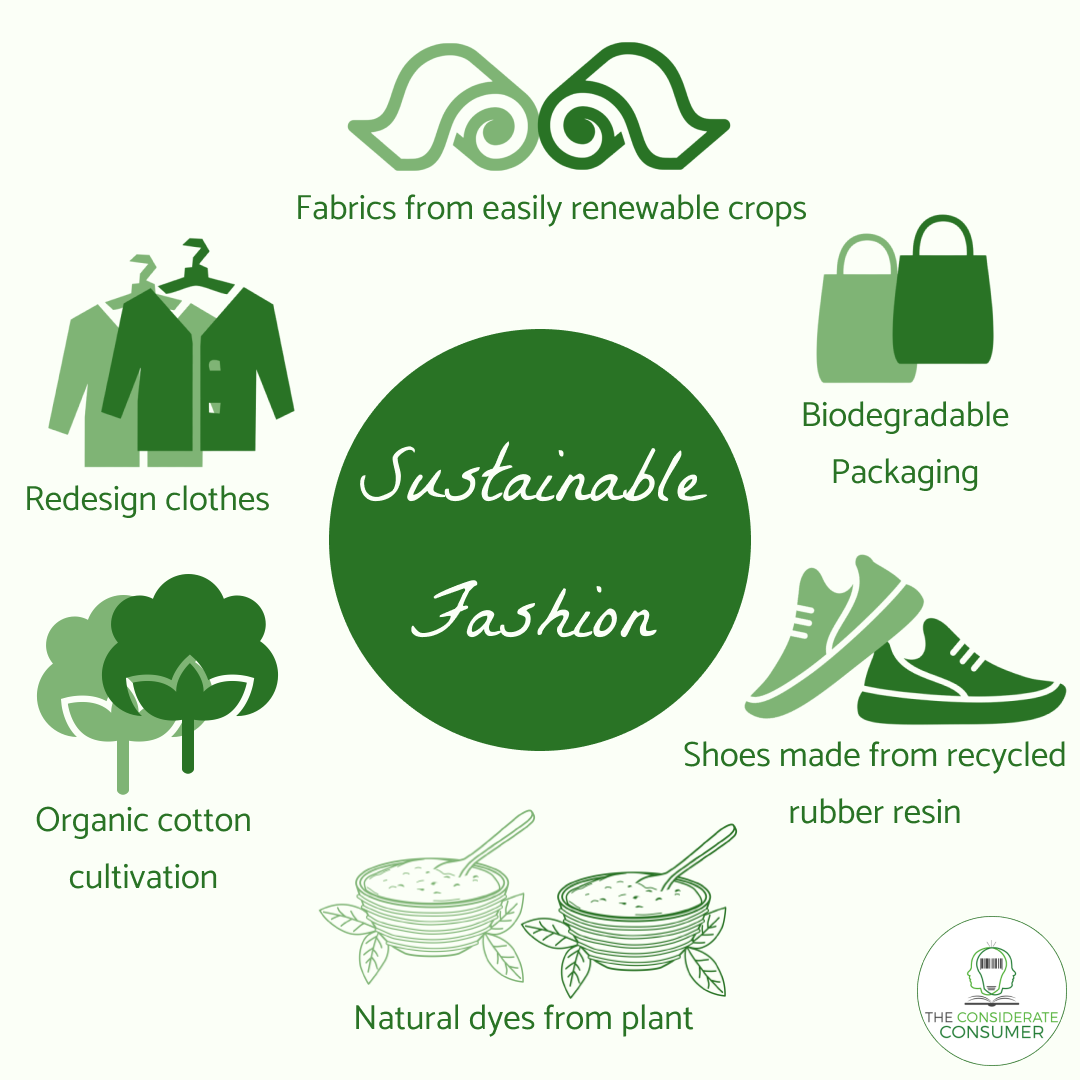Cape Town Sustainable Fashion Designers Leading the Green Activity
Cape Town Sustainable Fashion Designers Leading the Green Activity
Blog Article
Stay Ahead of the Curve by Checking Out Ingenious Fashion Patterns
In a market as dynamic as style, remaining in advance includes greater than simply complying with present patterns-- it demands an expedition of advancement. Smart textiles, for example, are transforming garments right into functional work of arts, while 3D printing is reinventing style procedures with its adjustable, waste-reducing capabilities. As sustainability ends up being a cornerstone, technologies like environment-friendly products and round fashion practices are improving ecological responsibility - Cape Town Sustainable Fashion. Additionally, the convergence of technology and style heralds a brand-new age of consumer involvement. Exactly how, then, can these emerging fads redefine the future of fashion, and what implications do they hold for brands seeking to grow in this advancing landscape?

Embracing Smart Textiles
In the last few years, the apparel industry has actually witnessed a transformative shift with the integration of wise textiles, a sophisticated innovation that blends technology with fabric. This advancement stands for not just a combination of aesthetics and functionality but likewise a considerable leap towards sustainability and personalization in vogue. Smart fabrics, likewise referred to as e-textiles, embed sophisticated electronics such as sensors and conductive threads within the fabric, enabling garments to interact with the setting or the user.
These fabrics are created to keep an eye on physical specifications, such as heart rate or body temperature, providing real-time health analytics. Past wellness applications, clever fabrics are likewise being utilized for flexible apparel, which can transform shade or pattern in reaction to environmental stimulations, therefore using a dynamic style experience.
In addition, the advancement of energy-harvesting textiles that generate power from activity or sunlight is leading the way for self-dependent wearable innovation. This advancement is appealing to eco mindful consumers and developers intending to decrease the eco-friendly impact of fashion. As r & d in this area development, smart fabrics are expected to end up being progressively widespread, improving the landscape of contemporary style with their multifunctional capacities.
The Surge of 3D Printing
Changing the production landscape, 3D printing has emerged as a game-changer in the apparel industry. This cutting-edge innovation has actually enabled designers to press the boundaries of creativity, producing detailed and personalized garments that were formerly unimaginable. By leveraging digital design and additive production, 3D printing helps with the development of complex geometries and patterns, enabling developers to trying out new textures and frameworks.
A noteworthy benefit of 3D printing in fashion is its ability to produce on-demand, minimizing waste and minimizing supply needs. This effectiveness not just enhances manufacturing processes however likewise enables fast prototyping, making it possible for designers to bring their visions to life in a shorter timeframe. In addition, 3D printing sustains customization to a degree unequaled by typical methods, providing unique designs and customized fits customized to private customer choices.
The surge of 3D printing has actually additionally equalized style, making it accessible to emerging designers who can now fabricate premium items without considerable monetary investment in standard production facilities. As innovation remains to development, the garment industry is positioned to harness the complete capacity of 3D printing, checking out new materials and techniques that will certainly redefine how fashion is developed and generated.
Lasting Fashion Advancements
As the fashion industry grapples with the pushing demand for ecological obligation, sustainable fashion innovations have emerged at the center of transformative adjustment. The expanding awareness of eco-friendly effect has sustained a shift towards even more eco-conscious techniques and products. Brand names and designers are now prioritizing sustainability, including techniques that minimize waste and reduce carbon footprints.
One significant growth is the rise of round style, which emphasizes recycling and upcycling to expand the lifecycle of garments. This approach not only decreases waste however top article additionally encourages customers to take on a more mindful strategy to clothes usage.
An additional development hinges on the adoption of ingenious dyeing strategies that make use of waterless procedures or all-natural dyes, thereby minimizing the substantial amounts of water and chemicals generally made use of in fabric dyeing. Furthermore, improvements in biotechnology have actually brought about the creation of lab-grown leather and materials, using environmentally friendly and cruelty-free options to traditional products. Via these introducing initiatives, the apparel industry is making meaningful strides towards a more sustainable future.

Tech-Integrated Apparel
Tech-integrated garments stands for an innovative fusion of style and modern technology, reshaping how people engage with their clothes. This innovative domain name is marked by the content incorporation of wise textiles and ingrained electronic components, boosting both performance and aesthetic allure. From health and fitness trackers installed in sportswear to heated jackets controlled by means of mobile phone applications, tech-integrated clothing offers customers unmatched convenience and flexibility.
Pioneering brands are driving this trend, focusing on creating garments that respond to environmental stimulations or user commands. For circumstances, some garments can transform shade or pattern in feedback to temperature level changes, while others integrate biometric sensors to keep track of health metrics like heart rate or stress degrees. The smooth combination of innovation right into fabrics likewise encompasses environmental sustainability, with efforts to develop self-cleaning textiles or garments that change to weather conditions, thus minimizing the demand for numerous layers.
Additionally, the introduction of wearable technology is not simply restricted to clothes but reaches devices like watches and eyeglasses, further widening the range of tech-integrated fashion. As the sector remains to introduce, the capacity for personalization and personalization in garments grows, offering customers distinct, tech-enhanced style experiences that satisfy their individual demands and preferences.
Future of Virtual Style
In the last few years, the future of digital style has arised as a transformative force within the sector, leveraging improvements in digital modern technology to redefine how style is created, experienced, and eaten. By integrating increased reality (AR), online reality (VR), and 3D layout tools, developers can now craft immersive and interactive experiences that go beyond conventional style boundaries. Online style permits the production of garments that exist solely in digital read settings, providing countless possibilities for advancement without the constraints of physical production.
This electronic change not only provides possibilities for creative expression but likewise addresses sustainability problems fundamental in standard style practices. Cape Town Sustainable Fashion. By getting rid of the demand for physical sources, virtual fashion minimizes waste and decreases carbon footprints. Additionally, the surge of digital fashion lines up with the raising consumer demand for personalized and distinct experiences, as online garments can be personalized and customized to specific choices easily

Conclusion
The garment industry's future hinge on the combination of innovative innovations and sustainable techniques - Cape Town Sustainable Fashion. Smart textiles and tech-integrated garments are enhancing capability, while 3D printing provides possibilities for customization and waste decrease. Lasting fashion, via circular techniques and environmentally friendly products, shows a commitment to environmental stewardship. In addition, virtual style is positioned to redefine consumer communications. Adjusting to these trends is necessary for brands seeking to continue to be appropriate and affordable in this rapidly progressing landscape.
In current years, the style sector has actually witnessed a transformative shift with the combination of wise fabrics, a cutting-edge development that blends innovation with textile.As the style sector grapples with the pushing demand for environmental responsibility, sustainable fashion developments have emerged at the leading edge of transformative modification.In recent years, the future of online fashion has emerged as a transformative force within the industry, leveraging advancements in digital technology to redefine how fashion is created, experienced, and eaten. The surge of digital style straightens with the boosting customer demand for distinct and customized experiences, as virtual garments can be customized and tailored to specific choices with simplicity.
The fashion industry's future lies in the integration of sustainable practices and innovative modern technologies.
Report this page